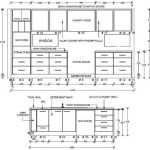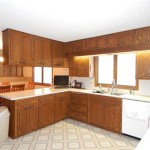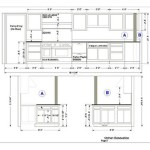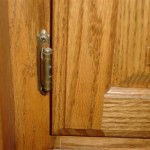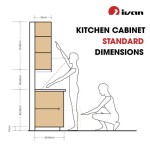Kitchen Backsplash Ideas For Medium Brown Cabinets
Medium brown cabinets offer a versatile foundation for kitchen design, bridging the gap between light and dark tones. Their inherent warmth creates an inviting atmosphere, but selecting the right backsplash is crucial for completing the aesthetic. A well-chosen backsplash complements the cabinets, enhances the overall design scheme, and protects the wall from splashes and spills. The sheer variety of materials, colors, and patterns available can make the selection process daunting. This article aims to provide a comprehensive guide to backsplash ideas that work harmoniously with medium brown cabinets, enabling homeowners to make informed decisions.
The interplay of color is paramount when pairing a backsplash with medium brown cabinets. Understanding the undertones in the wood is essential. Are they warm, with hints of red or orange? Or are they cooler, with hints of gray or green? Identifying these undertones will guide the choice of backsplash colors. Complementary colors create harmony, while contrasting colors create visual interest.
Material choice is another critical factor, impacting both the aesthetic appeal and the functional performance of the backsplash. Tile remains a popular choice, offering a wide range of styles, sizes, and materials, from ceramic and porcelain to glass and natural stone. Other options include stainless steel, wood, and even painted glass. Each material possesses unique characteristics that influence the overall look and feel of the kitchen.
Finally, the pattern and texture of the backsplash play a significant role in defining the kitchen's style. Simple, clean lines create a modern, minimalist look, while intricate patterns add visual complexity and character. Textured surfaces add depth and dimension, enhancing the tactile experience of the space.
Color Palette Considerations for Medium Brown Cabinets
The color palette chosen for the backsplash should either complement or contrast with the medium brown cabinets. A monochromatic scheme uses different shades and tints of brown, creating a cohesive and understated look. For example, a light beige or cream-colored backsplash provides a soft contrast against medium brown cabinets, creating a bright and airy feel. Alternatively, a darker brown backsplash, such as a chocolate or espresso shade, adds depth and drama, creating a more intimate and sophisticated ambiance.
For a more vibrant and dynamic design, consider incorporating contrasting colors. Blues and greens work well with medium brown cabinets, offering a refreshing and natural feel. A light blue backsplash can evoke a coastal or country-inspired aesthetic, while a deep green backsplash adds a touch of earthy elegance. Grays and whites offer a neutral canvas, allowing the cabinets to be the focal point while providing a clean and contemporary backdrop.
Consider the specific shade of brown in the cabinets. Cabinets with warmer undertones pair well with warmer colors like beige, cream, and gold. Cooler-toned brown cabinets benefit from cooler colors like gray, blue, and green. Introducing metallic accents, such as stainless steel or copper, can add a touch of glamour and sophistication to both warm and cool color schemes. The amount of natural light in the kitchen also plays a role. Darker colors can make a small, poorly lit kitchen feel even smaller and darker, while lighter colors can brighten up the space and make it feel more open.
Specific color combinations to consider include:
- Cream or Off-White: Creates a classic and timeless look that brightens the kitchen.
- Light Gray: Offers a modern and sophisticated feel, complementing the warmth of the brown cabinets.
- Sage Green: Provides a natural and organic touch, creating a calming and inviting atmosphere.
- Pale Blue: Evokes a coastal or country-inspired aesthetic, adding a refreshing and airy feel.
- Bronze or Copper: Adds a touch of warmth and luxury, complementing the brown tones and creating a rich and elegant look.
Material Selection for Backsplashes with Medium Brown Cabinets
The choice of material for the backsplash significantly impacts the overall aesthetic and functionality of the kitchen. Tile is a versatile and durable option, available in a wide range of materials, sizes, shapes, and finishes. Ceramic and porcelain tiles are cost-effective and easy to maintain, making them a popular choice for backsplashes. They are resistant to stains, water damage, and heat, ensuring long-lasting performance.
Glass tiles offer a sleek and modern look, reflecting light and adding a touch of elegance to the kitchen. They are non-porous and easy to clean, making them a practical choice for areas prone to splashes and spills. Natural stone tiles, such as granite, marble, and travertine, add a touch of luxury and sophistication to the kitchen. Each stone possesses unique variations in color and pattern, creating a one-of-a-kind backsplash. However, natural stone requires more maintenance than ceramic or porcelain tiles, as it is more porous and susceptible to staining.
Beyond tile, other material options include stainless steel, wood, and decorative wall panels. Stainless steel backsplashes offer a modern and industrial look, complementing stainless steel appliances and creating a cohesive design scheme. Wood backsplashes add warmth and texture to the kitchen, creating a rustic or farmhouse-inspired aesthetic. They require proper sealing and maintenance to protect them from moisture damage. Decorative wall panels are available in a variety of materials and designs, offering a quick and easy way to update the kitchen backsplash. They can mimic the look of tile, stone, or wood, providing a cost-effective alternative to traditional backsplash materials.
Consider these factors when choosing a backsplash material:
- Durability: Choose a material that can withstand daily use, including splashes, spills, and heat.
- Maintenance: Select a material that is easy to clean and requires minimal upkeep.
- Cost: Consider the budget and choose a material that fits within the financial constraints.
- Aesthetic: Select a material that complements the cabinets and enhances the overall design scheme.
Pattern and Texture: Adding Visual Interest to the Kitchen
The pattern and texture of the backsplash significantly contribute to the kitchen's overall design and visual appeal. A simple, clean design creates a minimalist and contemporary look, while intricate patterns add character and visual interest. Textured surfaces add depth and dimension, enhancing the tactile experience of the space.
Subway tile is a classic and versatile choice, offering a timeless and elegant look. It can be installed in various patterns, such as horizontal, vertical, or herringbone, creating different visual effects. Mosaic tile offers a wide range of patterns and colors, allowing for endless design possibilities. It can be used to create intricate designs, geometric patterns, or simple color blocks. Geometric patterns, such as hexagons, chevrons, and triangles, add a modern and contemporary touch to the kitchen. They can be used to create a bold statement or a subtle accent.
Textured backsplashes can add depth and dimension to the kitchen, creating a more engaging and visually appealing space. This can be achieved through the material choice, such as natural stone with its inherent variations, or through textured tiles that mimic natural materials or feature raised patterns. Consider the scale of the pattern in relation to the size of the kitchen. Small patterns can get lost in a large kitchen, while large patterns can overwhelm a small kitchen. Choose a pattern that is proportionate to the size of the space and complements the overall design scheme.
Popular backsplash patterns and textures include:
- Subway Tile: A classic and versatile choice that complements a variety of cabinet styles.
- Herringbone: Adds a touch of sophistication and visual interest.
- Mosaic Tile: Allows for intricate designs and endless color combinations.
- Geometric Patterns: Creates a modern and contemporary look.
- Textured Tile: Adds depth and dimension to the space.
Ultimately, the best backsplash for medium brown cabinets is the one that complements the cabinets, enhances the overall design scheme, and meets the homeowner's functional and aesthetic needs. By considering the color palette, material selection, and pattern and texture, homeowners can create a kitchen that is both beautiful and functional.
The selection of grout color also deserves consideration. Grout lines can either blend in seamlessly with the tile or create a contrasting visual element. Choosing a grout color that closely matches the tile will create a more uniform and subtle look, while a contrasting grout color will accentuate the tile pattern and add definition. Dark grout lines can also help to conceal dirt and stains, making them a practical choice for high-traffic areas.
Lighting plays a crucial role in showcasing the backsplash and enhancing its beauty. Under-cabinet lighting can illuminate the backsplash and highlight its texture and color. Recessed lighting can provide overall ambient light, while pendant lights can add a decorative touch and further enhance the backsplash. Consider the color temperature of the lighting, as it can affect the appearance of the backsplash colors. Warm lighting can enhance the warmth of brown cabinets and complementary backsplash colors, while cool lighting can create a more modern and contemporary feel.

73 Brown Backsplash Ideas A Traditional Classy Kitchen Cabinets And Kitchens

54 Backsplash For Brown Kitchen Cabinets Trendy Backsplashes

54 Backsplash For Brown Kitchen Cabinets Trendy Backsplashes
How To Modernize Brown Kitchen Cabinets Lily Ann

Pin On Kitchen

Best Kitchen Backsplash Ideas For Dark Cabinets Family Handyman

Best Kitchen Backsplash Ideas For Dark Cabinets Brown Designs And

54 Backsplash For Brown Kitchen Cabinets Trendy Backsplashes

3 Trending Kitchen Backsplash Tile Types In 2024 Tiles And Deco

54 Backsplash For Brown Kitchen Cabinets Trendy Backsplashes
Related Posts

